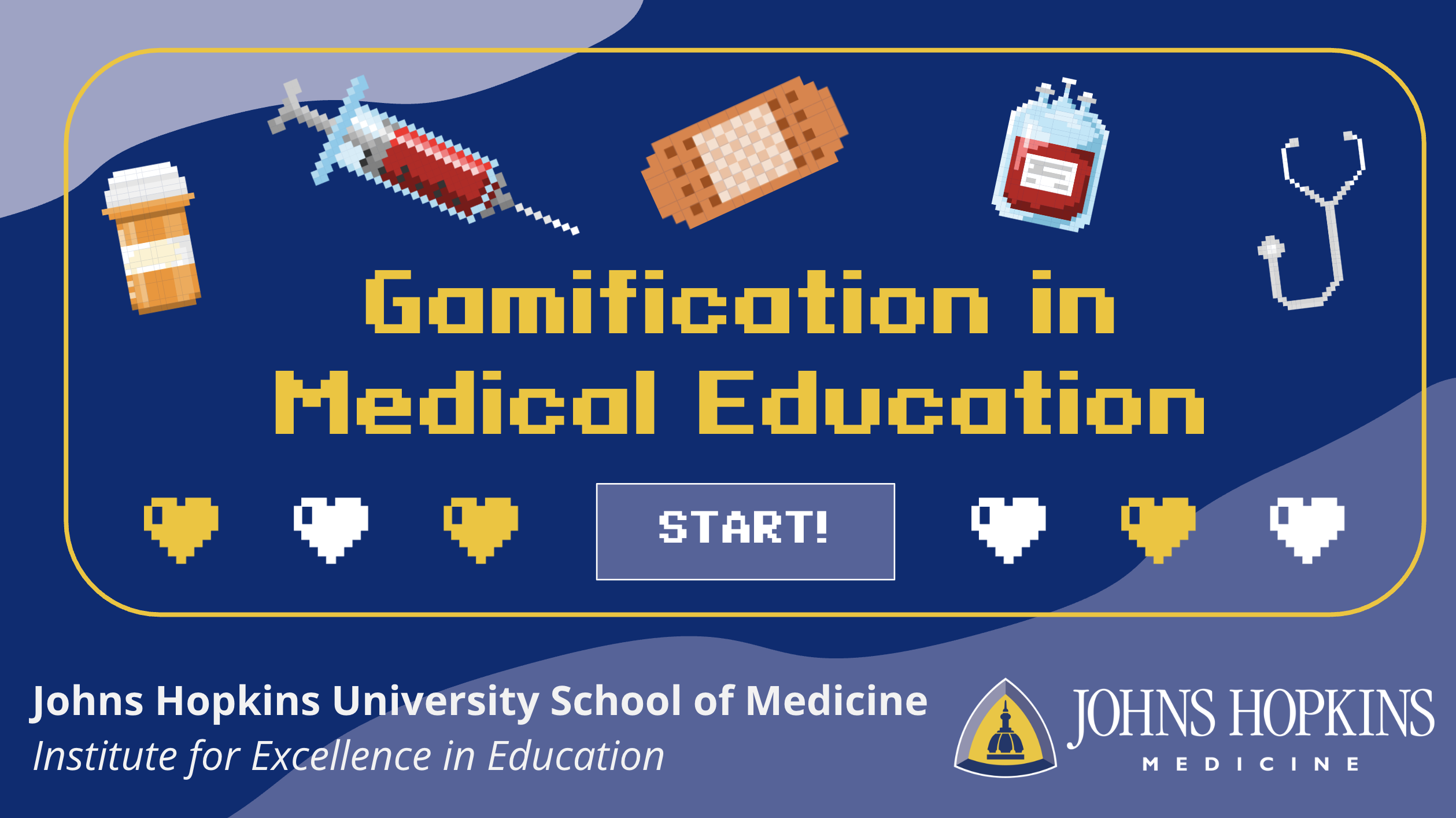Comments? Contact IEE.
1. Objectives
- Define gamification and explain its relevance and potential benefits in the context of medical education
- Differentiate between low- and high-resource gamification strategies suitable for various learning environments
- Apply appropriate game mechanics to support specific educational goals, learner needs, and time constraints
- Address common barriers to implementing gamified learning, including learner resistance and logistical challenges
- Design or adapt a simple educational game or activity that aligns with core learning objectives and principles of instructional design, including cognitive load theory
2. Preparation in Advance
-
When was the last time you felt truly engaged in a learning experience—and what made it memorable?
-
Do your learners participate because they’re motivated, or because they have to?
(What role could fun, challenge, or competition play in changing that dynamic?) -
Have you ever dismissed gamification as too “childish” for professional learners?
(What if the issue isn’t playfulness—but how we frame and design it?) -
What barriers (real or perceived) are holding you back from experimenting with more interactive and engaging teaching methods?
(And what small steps could you take to start breaking them down?)
3. The Module
4. Application of the Module
- Exercise 1: Analyze This Module Through a Gamification Lens
- Exercise 2: Apply Game Mechanics to Your Own Teaching
- Exercise 3: 4. Design a Mini Gamified Activity
Reflect on the gamified elements used throughout this course.
-
Which game mechanics or strategies did you find most effective?
-
Were any elements distracting or confusing? Why?
-
How did the gamification impact your engagement, motivation, or understanding?
5. Next Steps and Coaching
Develop or adapt a brief gamified learning activity (e.g., a quiz game, role-play, or case-based challenge) and share it with a colleague or mentor. Ask them to review it using the Game Mechanics Principles and Practical Considerations discussed in the module. Use their feedback to revise and strengthen your activity—and consider offering to review one of theirs in return.
6. Summary Points
- Introduction / Defining Gamification
- Game Mechanics
- Technology, Innovation, & Examples
- Overcoming Barriers
- Gamification Mastery and Practical Tips
-
Gamification uses game elements (points, badges, leaderboards) in non-game settings to boost engagement and motivation.
-
In medical education, it transforms passive learning into interactive, hands-on experiences.
-
Traditional lectures lead to low retention; gamification fosters better recall and participation.
-
Gamification supports active learning, immediate feedback, and intrinsic motivation.
-
Its success is grounded in theories like self-determination, making learning both effective and enjoyable.
About the Authors
 Ashley Paul, MD, MEd
Ashley Paul, MD, MEd
Assistant Professor of Neurology, Johns Hopkins University School of Medicine
Clerkship Director, Neurology Core Clerkship
 Julianna Jung, MD, MEd, FACEP
Julianna Jung, MD, MEd, FACEP
Director of Innovation in Medical Education, Johns Hopkins University School of Medicine
Associate Director, Johns Hopkins Medicine Simulation Center
Associate Professor of Emergency Medicine

Michael Kentris, DO
Neurologist, Bon Secours Mercy Health


